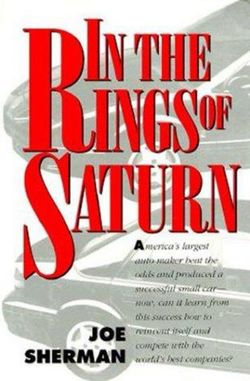triumph in the marketplace (Consumer Reports and J.D. Powers both dubbed Saturn a made-in-America breakthrough)--all woven together into a candid, panoramic tapestry. In the Rings of Saturn
has a striking immediacy: the reader sees almost first-hand GM's 1991 Annual Meeting at the Grand Ole Opry led by chairman Robert Stempel, as gadfly stockholders turn the event into a parody. We spend a week on the crankshaft machining line under the care of paternal, bearlike teamleader Bob Courtemanche, experiencing Saturn's revolutionary but troubled team structure. We even drive around with Spring Hill's flamboyant, tobacco-spitting mayor George Jones, who tells Sherman that the difference
between a "Yankee" and a "damned Yankee" is "a Yankee comes here and goes home; a damned Yankee stays." Dozens of characters, from local farmers, to inspired assembly line workers, to "car smarts and
gut feel" engineers, move across these pages. Through these flesh-and-blood portraits, Sherman brings to life a very American story of renewal and growth, of great hope and soured expectations, of greed and lost opportunities. And he reveals as well the downside of the project--that while the car itself is a triumph, the project has failed to provide either the learning laboratory General Motors needed or a model for positive redevelopment rural America yearns for. In the Rings
of Saturn is both the anatomy of a corporate triumph and an incisive commentary on industrial renewal in the United States. And it exposes the high hopes and earthshattering disappointments that occur when
big business appears in rural areas. It is a volume that will enlighten business readers, inform the automotive industry, and entertain Saturn car buyers, many of whom will think: "My little car means all this?"




Share This Book: